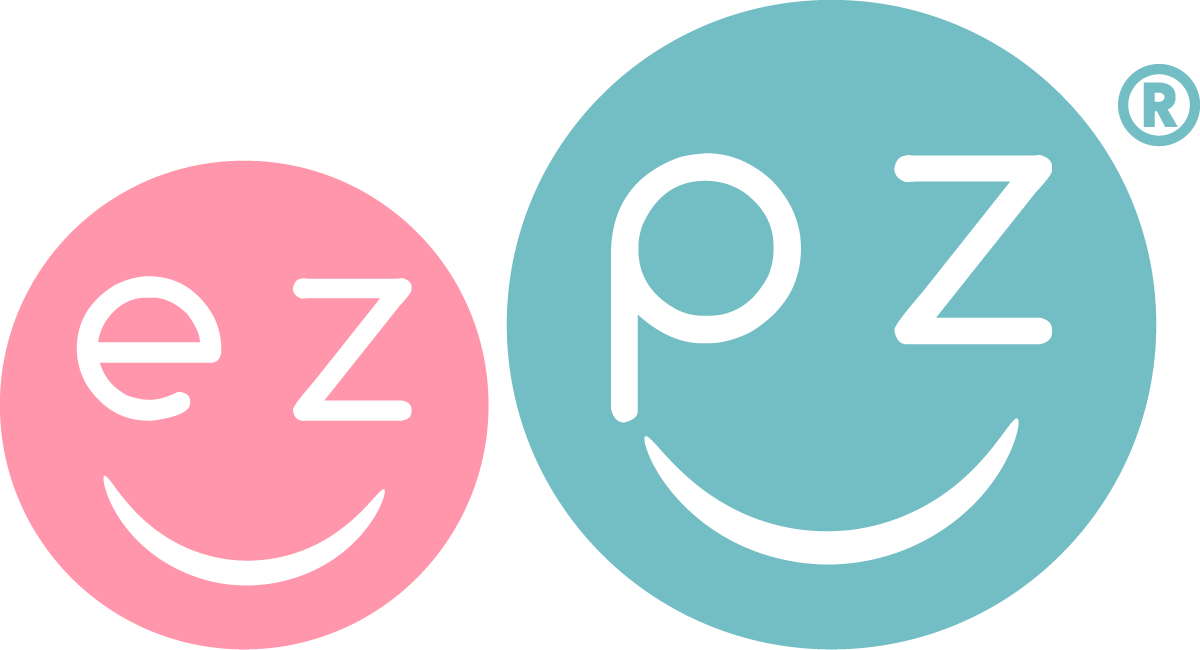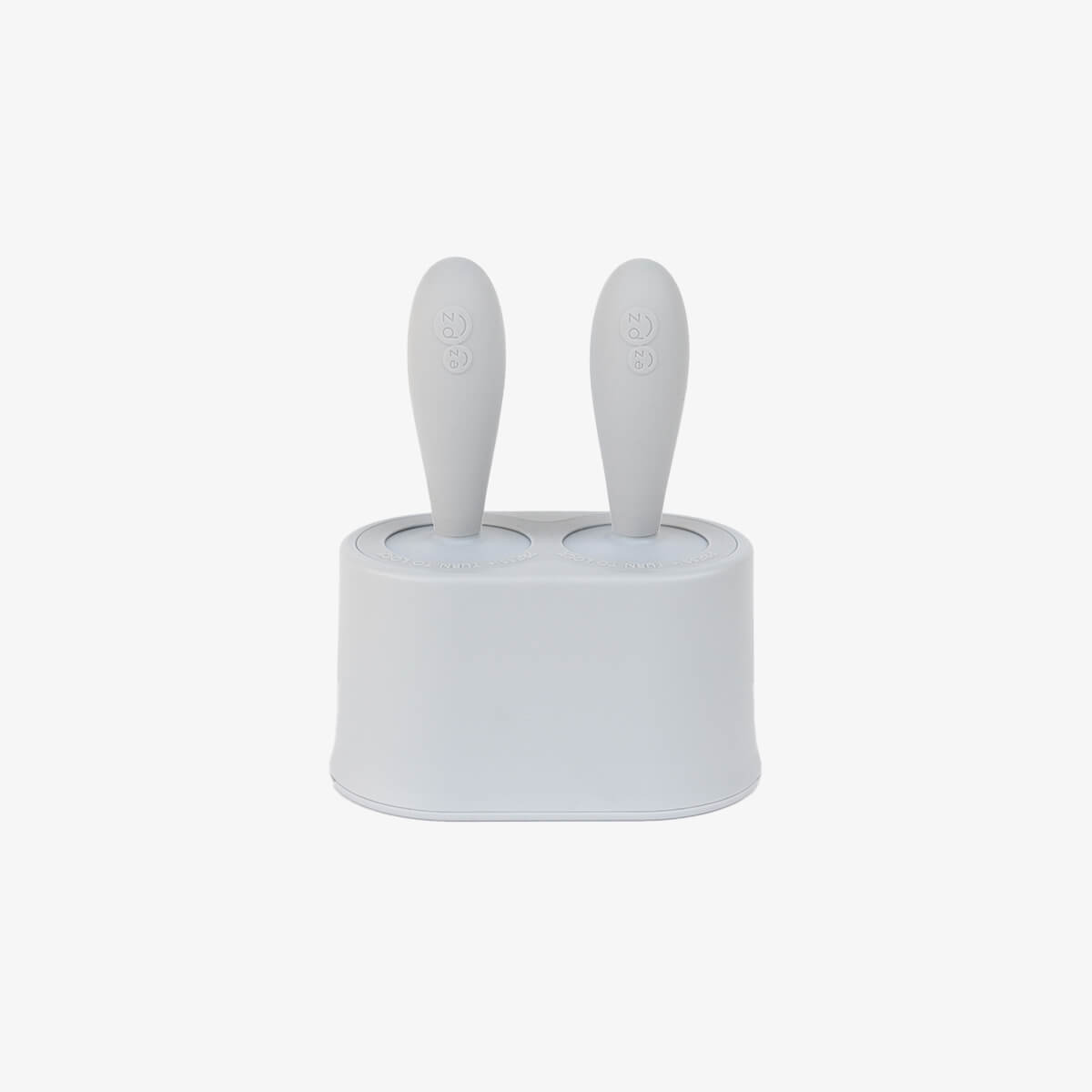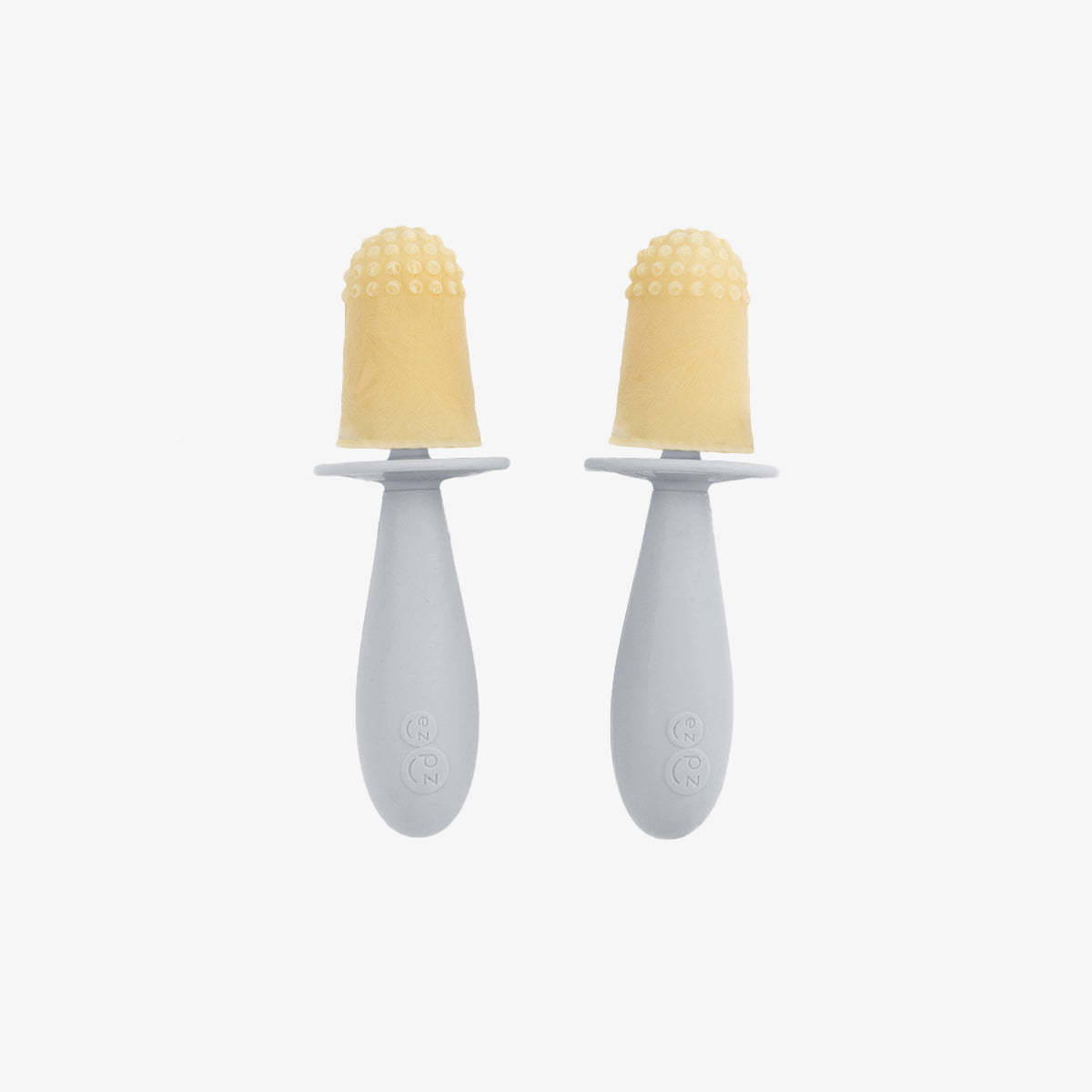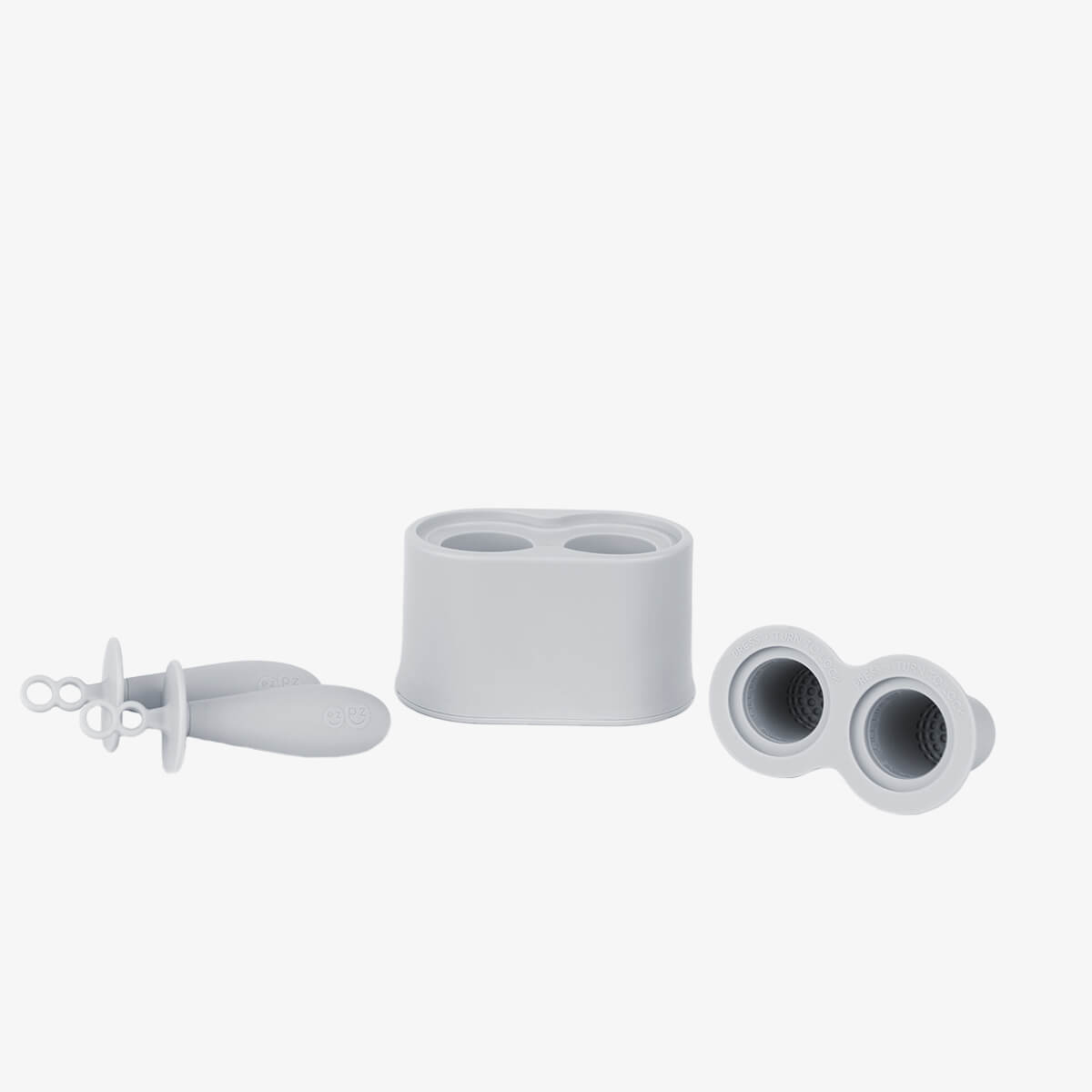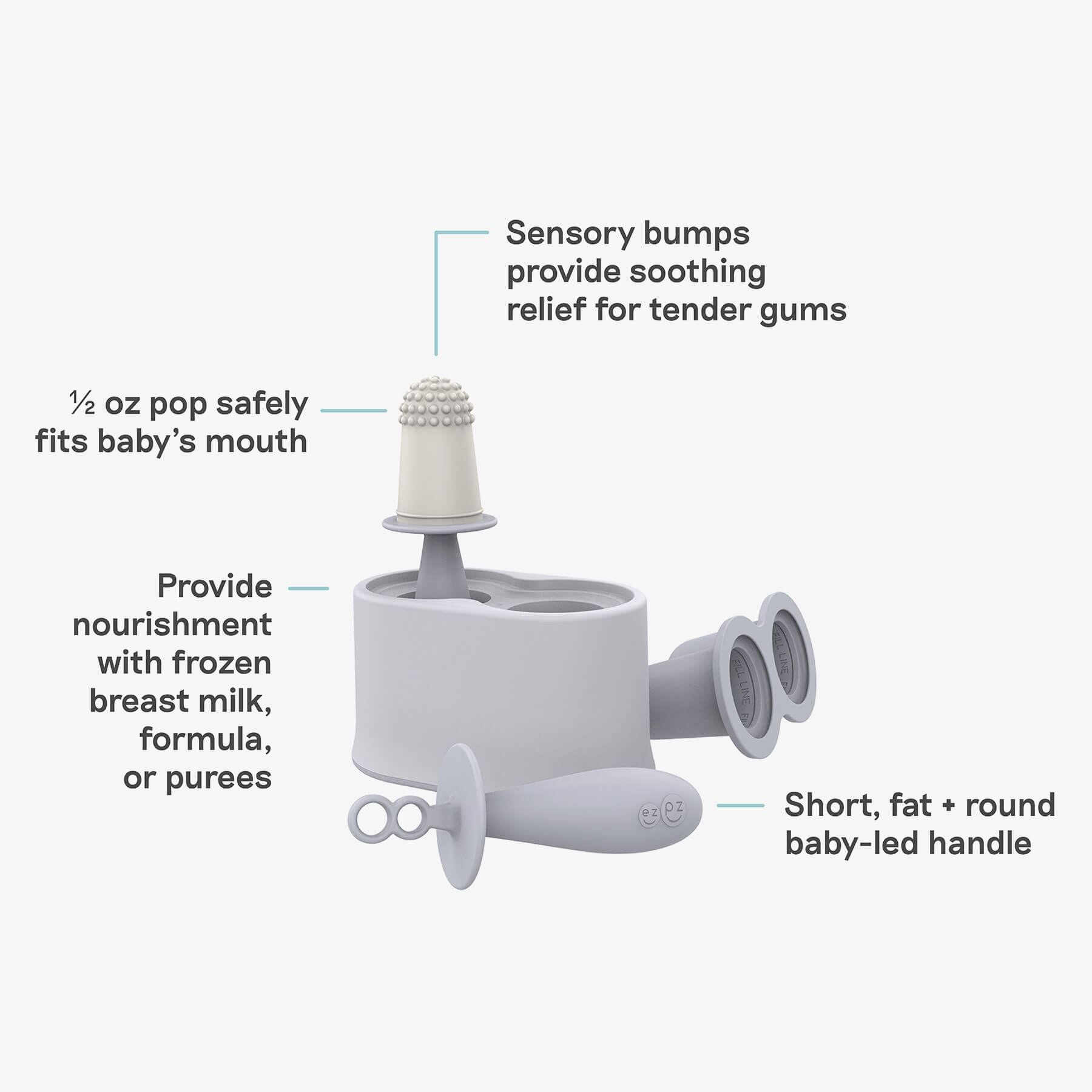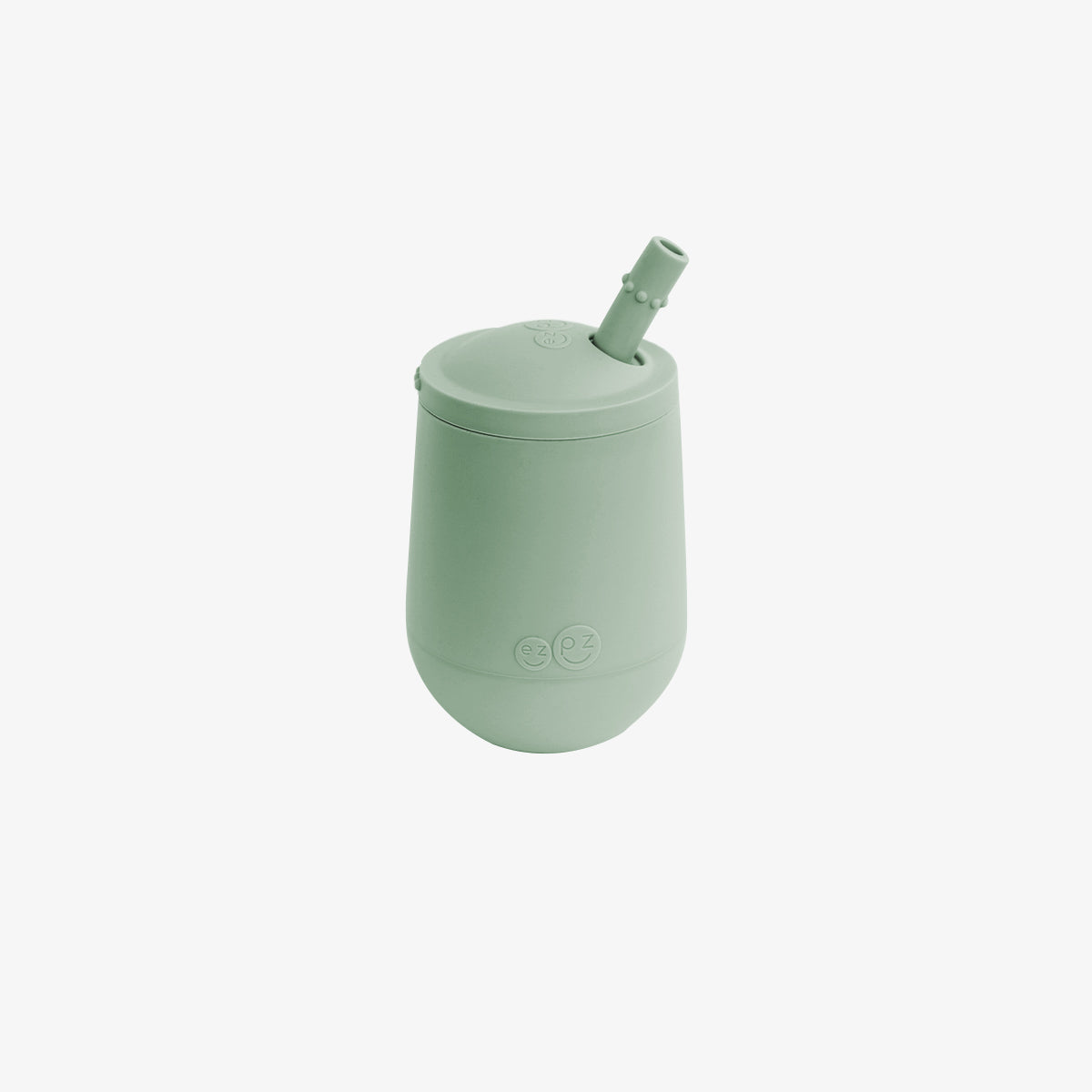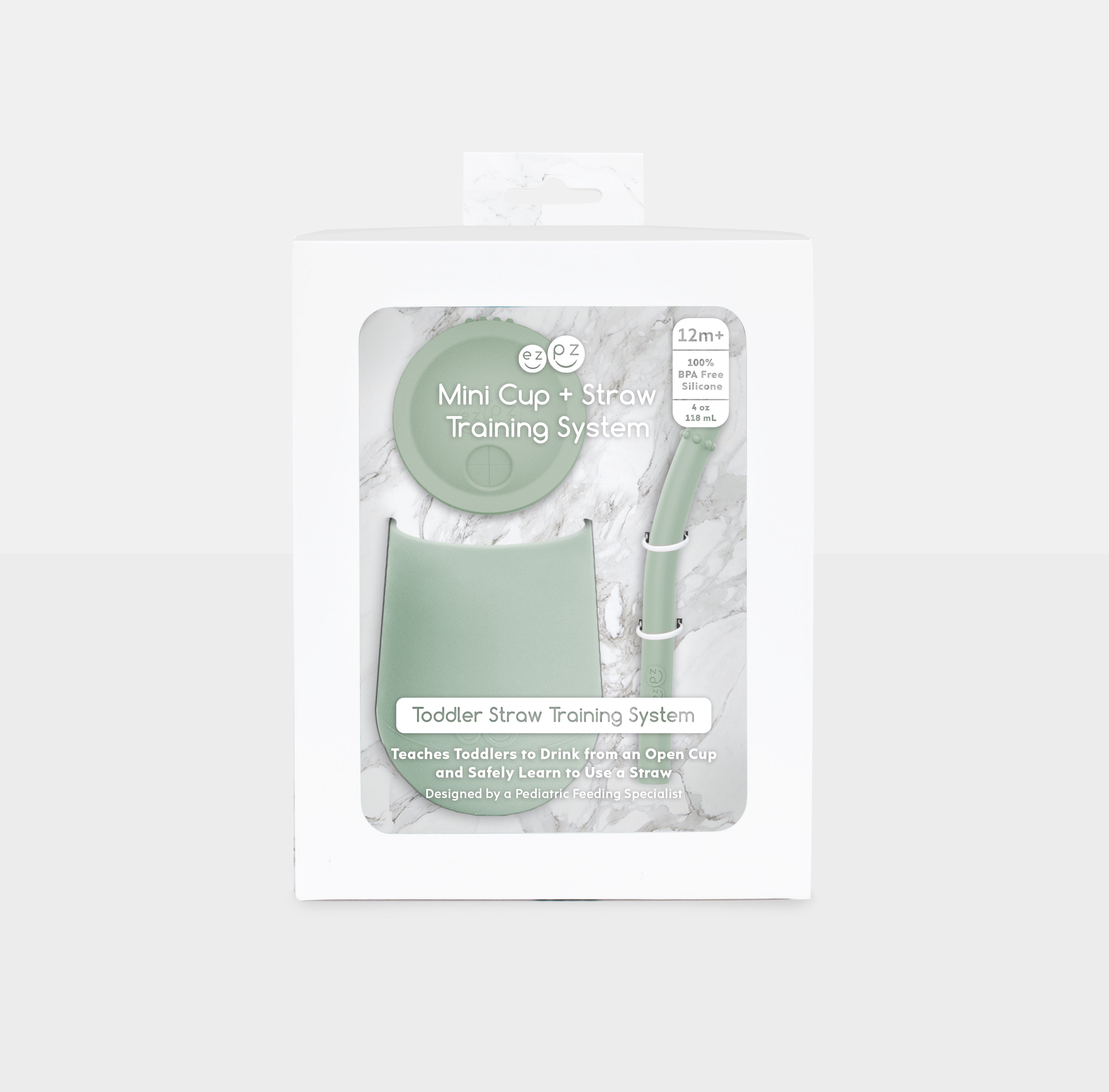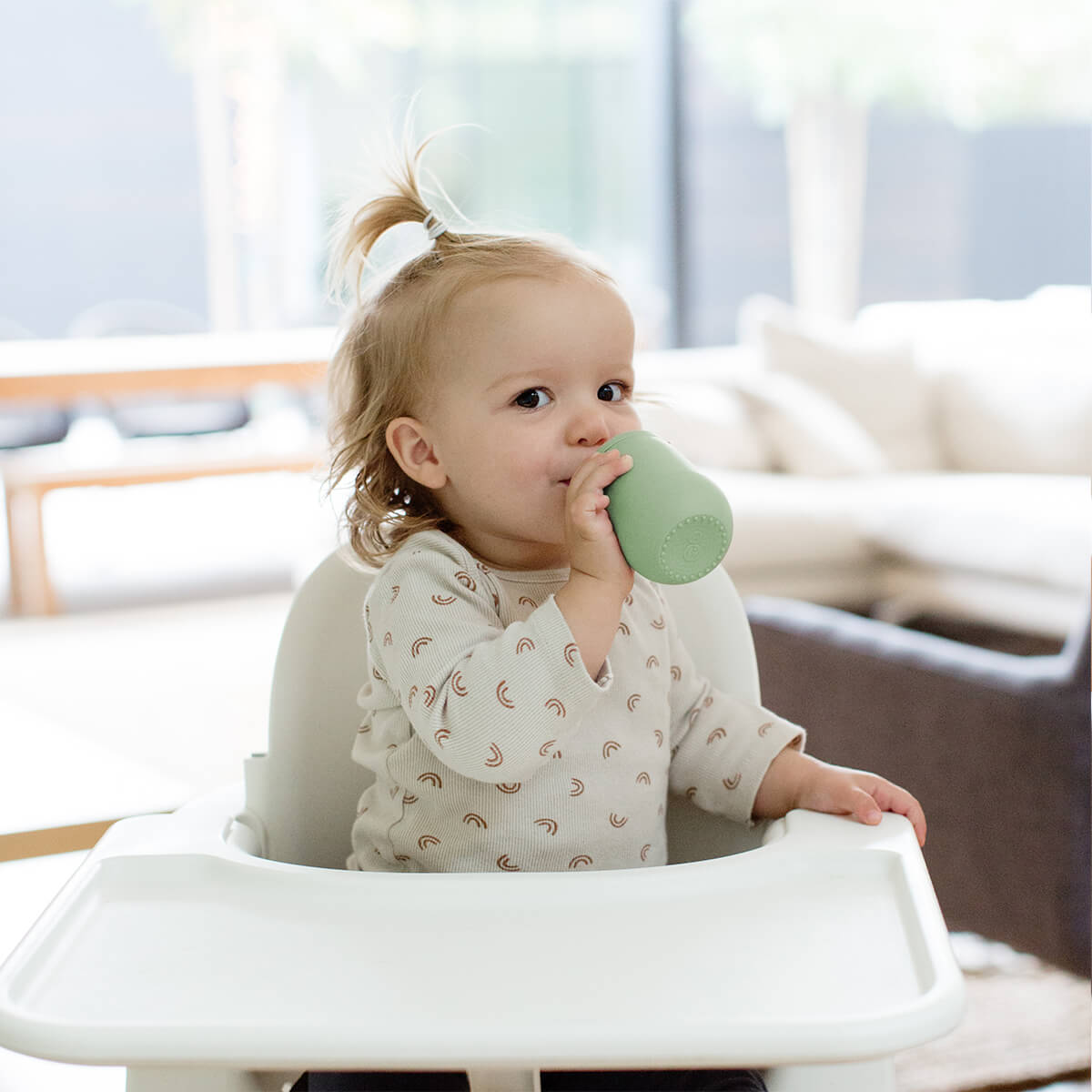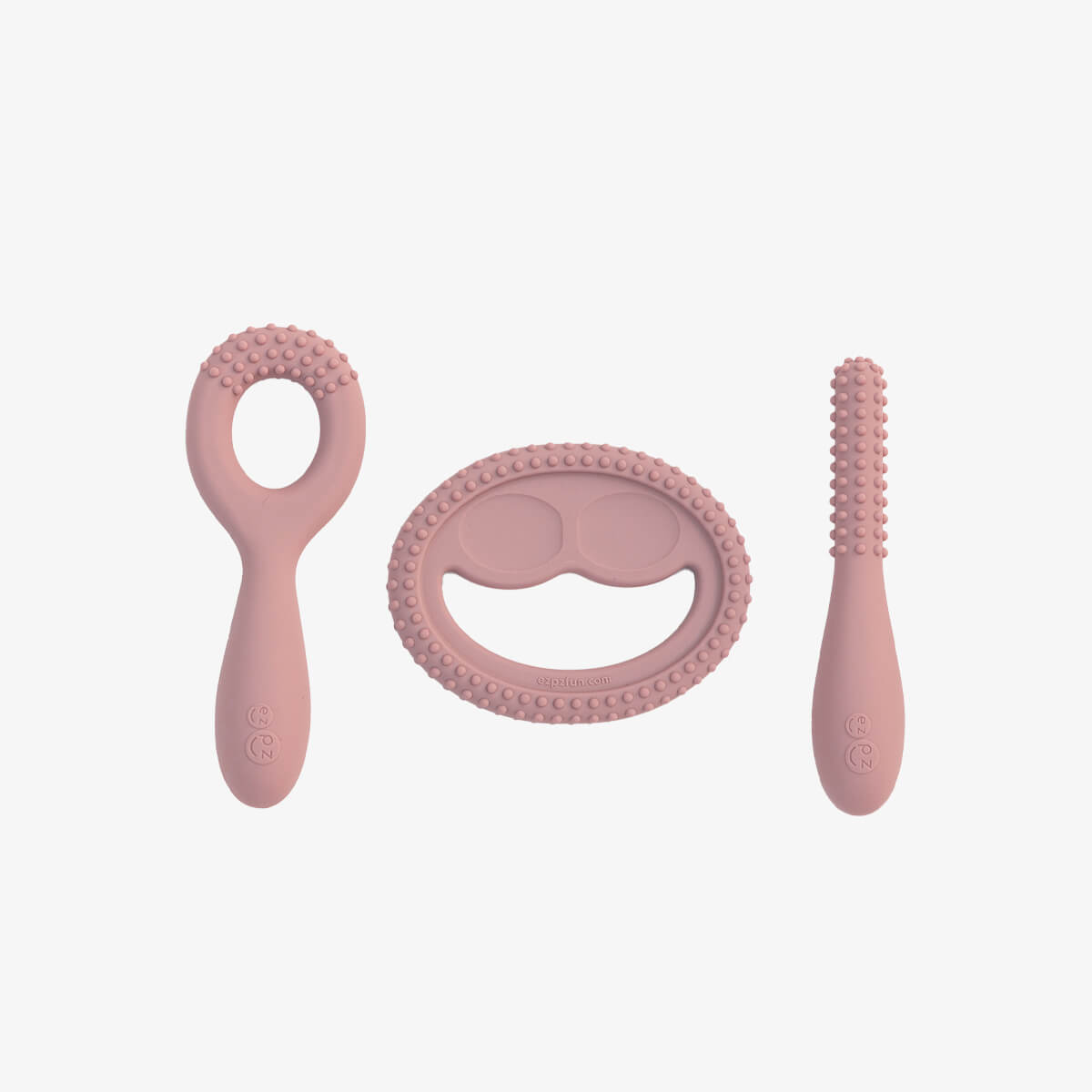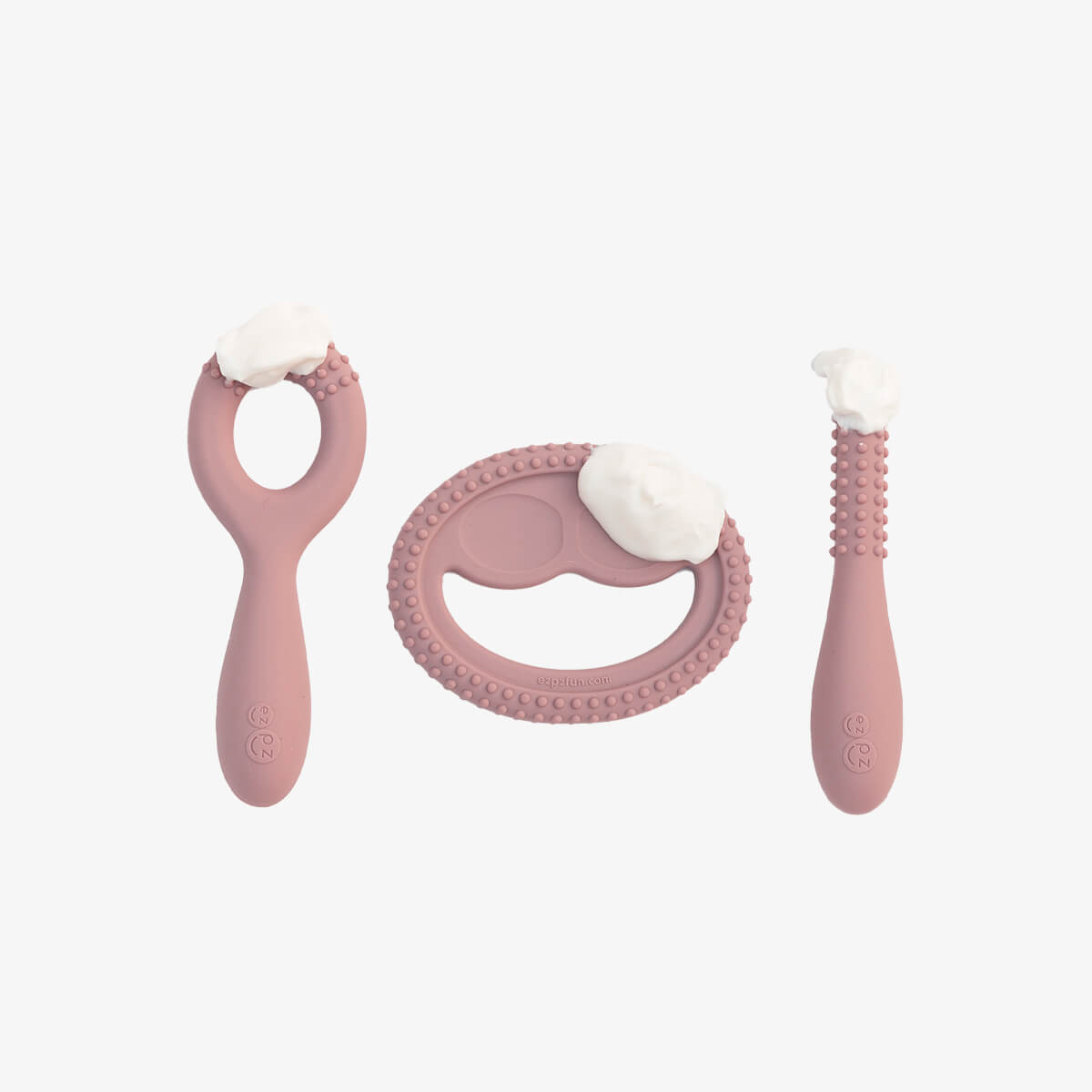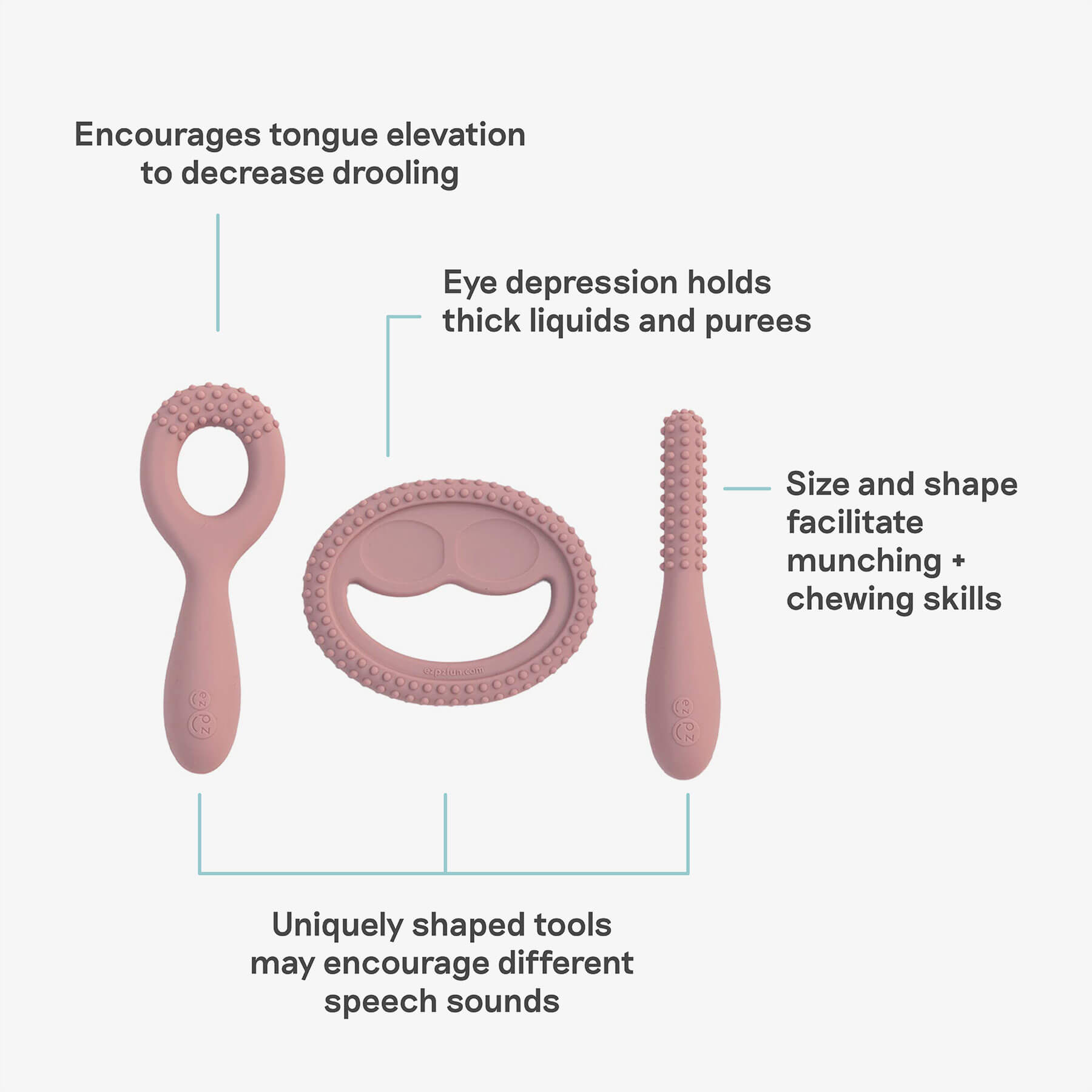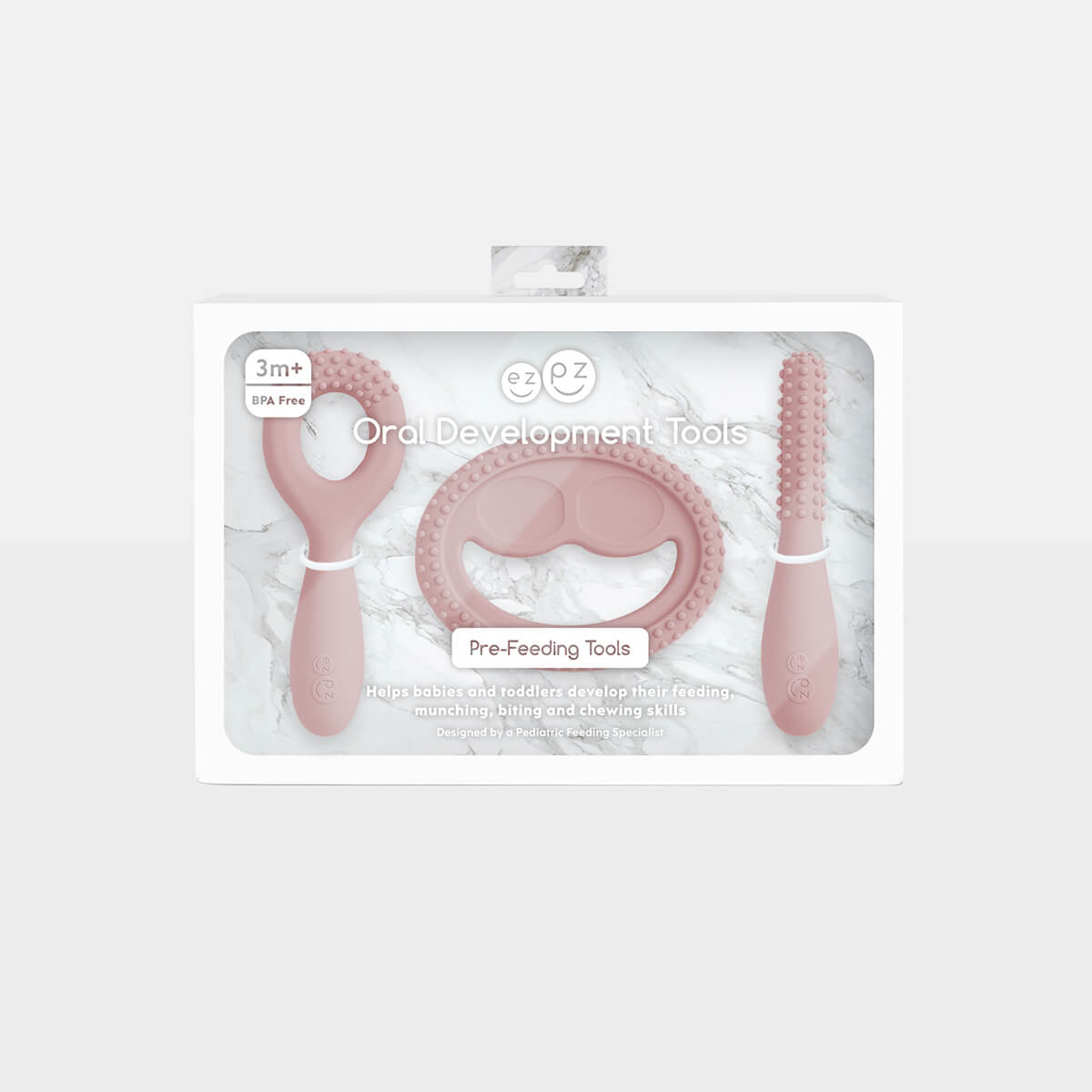Are you wondering if your baby needs teeth for starting solids? Or if chewing skills coincide with teeth development? In this blog I will answer these questions, as well as provide tips to help teach chewing and make starting solids ezpz.
Which teeth are needed to start solids safely? Having teeth is not a prerequisite for starting solids. When caregivers / parents introduce solid foods around 6 months of age babies generally have no teeth (but they are getting ready to emerge). And this is developmentally appropriate, as teeth are not needed for purees (the traditional method of starting solids) or for soft, moist finger foods (the baby-led weaning method of starting solids).
- Expert Tip: Did you know that some babies are born with a tooth? And other babies may not get a tooth until their first birthday? Ages for tooth eruption can vary depending on a baby’s oral development. With that in mind, if caregivers / parents wait to start finger foods until the baby has teeth, they could be waiting until 9 months of age (or later). By then, we may have delays in oral motor, feeding, swallowing and fine motor milestones.
- Chewing Tip: Massaging a baby’s gum line with your finger or a popsicle can help improve sensory awareness. The Tiny Pop is a popsicle mold designed specifically for a baby’s developing mouth. Frozen breast milk (or formula) popsicles can be very beneficial for both sensory and oral development when starting solids. Here are a few recipes to try with your little one!
How do babies chew without teeth? Babies learn to eat food through the process of ‘munching,’ which is an up and down movement of the jaw. Finger foods (the length and thickness of an adult pinky finger) are placed on the gum line. Then, baby will munch the food with their gums and mix it with their saliva until it forms into a bolus (food ball). Then they will elevate their tongue and swallow. This process can involve the teeth (if baby has them), but it also involves other oral anatomy such as opening and closing of the jaw, moving food from side to side with the tongue, pressing food with the cheeks and keeping that food inside the mouth with adequate lip closure.
- Expert Tip: Tongue, cheek, lip, jaw and gum line movements can develop when babies get the opportunity to practice chewing on oral development tools, drinking from a straw cup, eating independently from a baby-led spoon and eating finger foods.
- Chewing Tip: Exaggerate when you are chewing your food to model how to chew and swallow correctly. Take sips from an open cup or straw cup to demonstrate how we clear our oral cavity after we chew and eat. The Mini Cup and Straw Training System teaches babies and toddlers to drink safely from a straw. This system has both a training side and advanced side of the straw to help littles learn the skill of safe straw drinking. Proper straw drinking promotes tongue and lip development, which can be beneficial when learning how to chew.
How does the chewing process change when babies get teeth? In the early stages of chewing, babies start with a munch chew (chewing motion where soft food is pressed together on the gum line). During the weaning process (generally somewhere between 6-12 months) your baby's first teeth will emerge. After the baby has a few teeth, the tongue will gently rest behind them when chewing. The tongue will then push the food from side to side (tongue lateralization) to chew with their gum line and teeth. As a baby grows into a toddler, advanced chewing skills emerge alongside the development of more teeth. Chewing moves from an up and down motion to a diagonal chewing pattern and, then, to a rotary chewing movement.
- Expert Tip: Chewing skills will correspond with the food consistency and texture variety that is consistently offered to them.
- Chewing Tip: Offer a variety of tools your baby can place at the front of their mouth as well as their gum line. This will help teach them the munching movements of the jaw as well as the lateral movements of the tongue. The Oral Development Tools are sensorimotor devices designed to help babies and toddlers practice munching, chewing, biting and feeding skills. Each set includes 3 tools (Loop, Smile and Stick) to improve tongue lateralization, lip closure and gum line stimulation.
Chewing and teeth development will vary by age. If you see that your baby is struggling with chewing, try some of the above-mentioned products and tips. If baby continues to have difficulties, reach out to your pediatrician for a referral to a speech language pathologist or occupational therapist that specializes in feeding and swallowing. If you have concerns about your baby’s teeth development discuss this with a pediatric dentist at either the 6 month or one-year appointment.
